Have you ever thought about how much platinum, palladium, and rhodium is in a catalytic converter?
Platinum, palladium, and rhodium are known as the “PGM” metals and they play a crucial role in catalytic converters. Catalytic converters (CAT) are essential for reducing harmful emissions from cars.
Each converter typically contains 2-8 grams of palladium, 3-7 grams of platinum, and 1-2 grams of rhodium.
In this blog post, we will discuss the amounts of PGMs in different types of catalytic converters.
We will also compare the prices of these metals and explore why they are used in catalytic converters. Stay tuned!
What's in this post?
What is platinum?
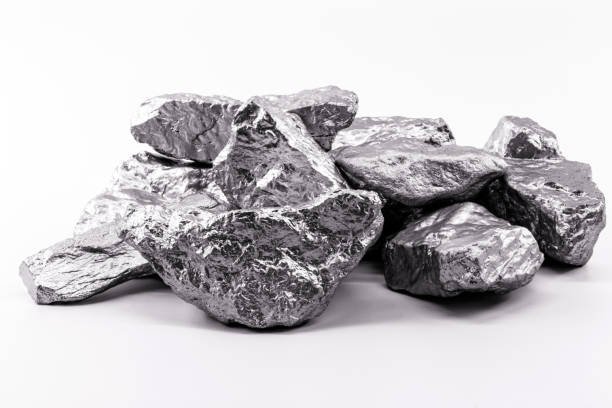
Platinum is a chemical element with the atomic number 78 and is represented by the symbol Pt.
It is a dense, malleable, precious, gray-white transition metal that is highly unreactive, resistant to corrosion, and does not tarnish when exposed to air. It is found in some nickel and copper ores as well as in native deposits.
Platinum is a valuable metal that is used in many different applications, including:
- Jewelry
- Automotive catalytic converters
- Cancer treatments
- Electronics
- Dentistry
Additionally, platinum’s low reactivity ensures that it does not interact with food or beverages. Consequently, it has become an increasingly popular metal for use in dinnerware, utensils, and linings for food storage containers.
How much platinum in catalytic converters?
The amount of platinum in a catalytic converter varies depending on the type of converter. Generally from 3 to 7 grams each catalytic converter.
For example, a light-duty truck or SUV may have a catalytic converter that contains 3 grams of platinum, while a heavy-duty diesel truck could have a converter with up to 7+ grams of platinum.
This is due to the fact that heavier vehicles require more powerful converters to effectively reduce emissions.
Platinum is especially efficient at absorbing heat from fuel combustion because it has low volatility and high thermal conductivity; it quickly absorbs toxins from exhaust fumes while efficiently reflecting heat away from other parts of the engine.
As an added bonus, it’s also incredibly durable and resistant to corrosion caused by extreme temperatures or chemicals in car fluids like motor oil or gasoline additives.
Despite its relatively small quantity, platinum is essential for the proper functioning of catalytic converters, and its price reflects its importance.
A gram of platinum can cost as much as $30, making it one of the most expensive metals on the market.
What is palladium?
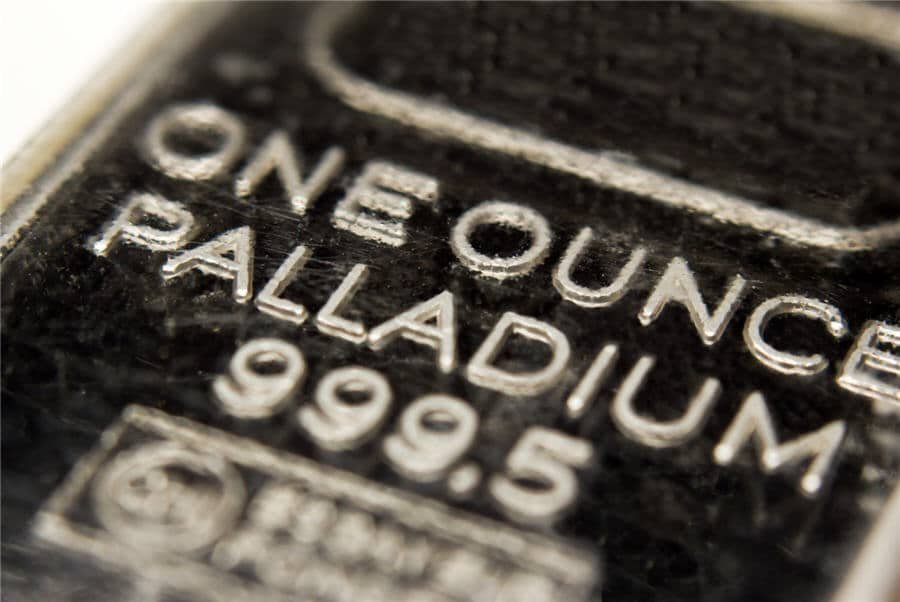
Palladium is a chemical element with the symbol Pd and atomic number 46. It is a rare and lustrous silvery-white metal found in the Earth’s crust.
Palladium has the lowest melting point and highest boiling point of any metal. It is also one of the densest, weighing twice as much as water.
Palladium was first discovered in 1803 by William Hyde Wollaston, but it was not until much later that its true nature was understood.
In the early 20th century, palladium was widely used in jewelry and dentistry for its lustrous appearance. However, it was quickly replaced by cheaper alternatives such as platinum.
Today, palladium is primarily used in catalytic converters and electronic devices. It is also becoming increasingly popular as a precious metal for investment purposes.
How much palladium in catalytic converters?
A typical converter contains between 2 and 8 grams of palladium, but the amount can vary depending on the size and type of vehicle. For example, larger trucks and SUVs may use up to 8 grams.
The price of palladium has been on the rise due to increased demand from the automotive industry. It can cost $65 per gram or more.
As a result, the cost of catalytic converters has also gone up. However, this increase is not likely to deter buyers, as the benefits of using palladium-based catalytic converters outweigh the cost.
What is rhodium?
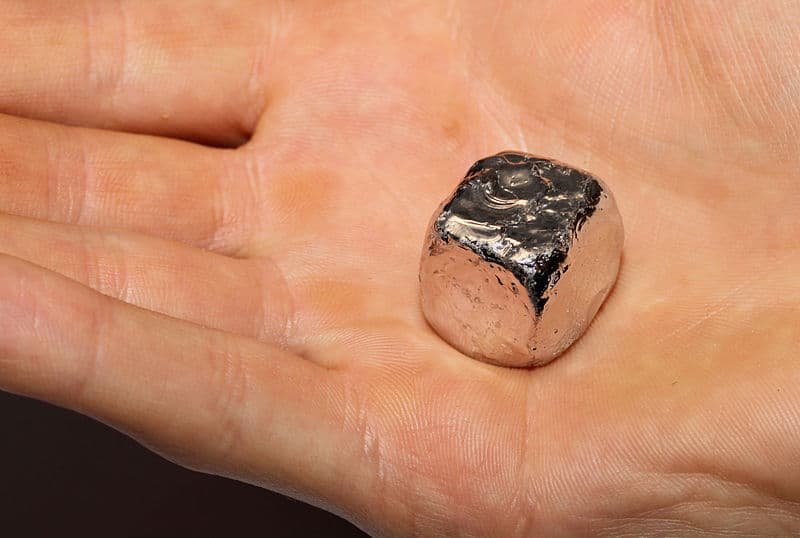
Rhodium is a chemical element with the symbol Rh and atomic number 45. It is a rare, lustrous, painless metal of the colloidal type, hard, and chemically inert.
Rhodium is a valuable metal that is used in jewelry, electronic equipment, and lubricants. The metal is also used in catalyst converters for automobiles.
Rhodium was discovered by William Hyde Wollaston in 1803. Rhodium’s name is derived from the Greek word rhodon, meaning “rose-colored.” The element’s color is rose-white.
The metal has an extremely high melting point and does not corrode readily in air. Rhodium is found in platinum ores and is also obtained as a byproduct of nickel refining.
The element’s major use is as a catalyst for the production of lead-free gasoline. Rhodium catalysts are also used to produce nitric acid and acetic acid, and to refine petroleum products such as gasoline and jet fuel.
In jewelry, rhodium is used to plate white gold and silver to give them a high lustre. Rhodium plating is also used on electronic connectors to prevent tarnishing.
How much rhodium in catalytic converters?
Rhodium is a precious metal that is used in a variety of applications, including jewelry and catalytic converters.
Rhodium is used in catalytic converters because it has excellent oxidation catalyst properties, meaning it is able to accelerate chemical reactions that convert noxious gases produced by vehicles into less dangerous substances like carbon dioxide and water vapor.
While the exact amount of rhodium used in catalytic converters can vary, it is typically between 1-2 grams. This small amount is enough to help reduce harmful emissions produced by automobiles without significantly impacting fuel economy or performance characteristics.
Given the high price of rhodium (it can cost more than $500 per grams), this means that a single catalytic converter can contain several hundred dollars worth of rhodium.
Useful read: Symptoms of clogged catalytic converter
Why use PGMs in catalytic converters?
Platinum, palladium, and rhodium are all precious metals that have a high resistance to corrosion and a ability to catalyze chemical reactions.
PGMs, or platinum group metals, are found in the honeycomb region of the catalytic converter. This is the most efficient and less expensive design, as opposed to the older catalytic converters that used pellets.
PGMs play an important role in reducing emissions from vehicles, and they work by catalyzing the chemical reaction that breaks down pollutants.
The honeycomb design helps to increase the surface area exposed to the exhaust gases, which maximizes the catalytic effect of the PGMs.
In addition, the honeycomb structure helps to keep the PGMs in place, preventing them from being ejected from the converter.
As a result, the honeycomb design is essential for maximizing the efficiency of the catalytic converter.
In a catalytic converter, palladium acts as a catalyst, promoting the reaction between exhaust gases and oxygen to produce water vapor and carbon dioxide.
Palladium is preferable to other metals because it is less likely to be poisoned by sulfur dioxide, one of the major pollutants in exhaust gases.
Palladium is also more effective than other metals at promoting the reduction of carbon monoxide and hydrocarbons.
As a result, the use of palladium in catalytic converters helps to reduce emissions of harmful pollutants.
Platinum is particularly effective at reducing carbon monoxide emissions, while palladium is more effective at reducing hydrocarbon emissions.
The resulting gases are less harmful to the environment than the original exhaust fumes.
In addition, platinum is also used in fuel cells, which are devices that generate electricity through chemical reactions.
Fuel cells are much more efficient than traditional combustion engines, and they emit far fewer pollutants.
Rhodium is often used in combination with other metals, as it helps to improve the efficiency of the catalytic converter.
In order to meet emission standards, automakers typically use a mix of all three metals in their catalytic converters.
The use of rhodium in catalytic converters was first proposed in the early 1970s, and by the 1980s it had become the catalyst of choice for gasoline-powered vehicles.
Rhodium is an effective catalyst because it can convert up to 90% of the harmful emissions from gasoline-powered engines into harmless water vapor and carbon dioxide.
In addition, rhodium is highly resistant to poisoning by lead and other metals, making it ideal for use in catalytic converters.
Why the prices of platinum, palladium, and rhodium are on the rise?
Platinum, palladium, and rhodium are all precious metals that are used in a variety of industries, including jewelry making, automotive manufacturing, and electronics.
In recent years, the prices of all three metals have been on the rise. There are a number of factors that have contributed to this trend.
First, demand for these metals has increased as the global economy has grown.
As more and more countries industrialize, they require these metals for a variety of applications, including catalytic converters.
In addition, China and India are both major consumers of these metals, as they are used extensively in the jewelry industry.
Second, supplies of these metals are relatively limited, and there has been little new production in recent years.
As a result, prices have risen as demand has outpaced supply.
Finally, geopolitical tensions have led to concerns about the stability of supplies from countries like Russia and South Africa, which are major producers of these metals.
As a result of these factors, prices for platinum, palladium, and rhodium are likely to continue to rise in the future.
Useful read: How to unclog catalytic converter
How to refine PGMs from a catalytic converter?
If you have a catalytic converter that you would like to sell, there are a few ways to extract platinum from a catalytic converter.
The most common way is to use a process called thermal decomposition. This process involves heating the converter to a high temperature (around 2,000 degrees Fahrenheit) in order to break down the metal oxides into their elemental form.
Once the metals have been separated, they can be purified and sold as commodities.
Another method of extracting platinum from converters is through chemical processes such as leaching or aqua regia, which is a mixture of hydrochloric and nitric acids. This method can be dangerous, so it’s important to take precautions such as wearing gloves and eye protection.
Another method is to use a solution of sulfuric acid and sodium dichromate, which will cause the platinum to precipitate out of the solution.
Once the platinum has been extracted, it can be sold in its pure form or used to create jewelry or other objects.
However, these methods are less common due to their complexity and the fact that they often result in lower yields of platinum.
Useful read: Which Cars Are Least Likely To Have Catalytic Converter Stolen?
Where to sell these metals after you get them from catalytic converters?
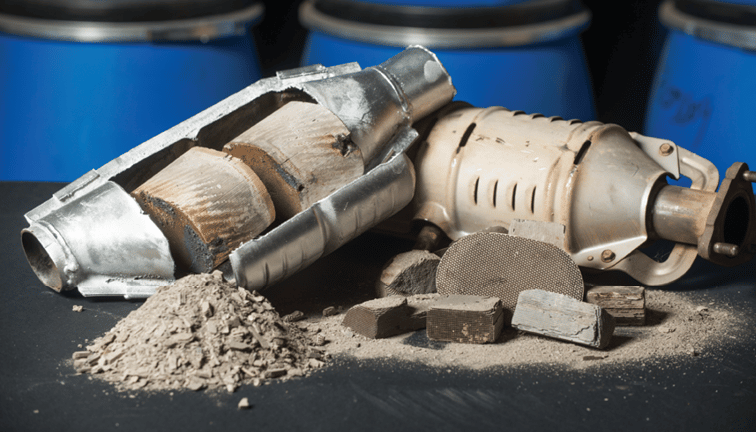
There are a few options available for those looking to sell platinum, palladium, and rhodium.
One option is to sell directly to a refinery. This is often the most direct and efficient way to sell these precious metals, as refineries are equipped to handle large quantities of material.
Another option is to sell through a broker. Brokers typically have relationships with a number of different refineries and can often get you a better price for your material.
Finally, you can also sell platinum, palladium, and rhodium on the open market. This option tends to be more time-consuming and involves more risk, but it can be a good option for those with a large quantity of material to sell.
Whichever option you choose, it is important to do your research in order to get the best price for your platinum, palladium, and rhodium.
FAQs
Which catalytic converter contains the most rhodium?
The amount of rhodium in a catalytic converter varies depending on the type and size of the engine, but on average, a vehicle with a large engine or multiple catalytic converters will have the most rhodium.
How can I tell if my catalytic converter contains precious metals?
There are a few ways to test your catalytic converter for precious metals. One way is to use a simple acid test kit, which will indicate the presence of platinum, palladium, or rhodium if they are present in your converter.
Another way to test your converter is to send it to a lab for analysis. This option is often more expensive, but it will give you a more accurate idea of the precious metal content of your converter.
How much gold is in a catalytic converter?
No gold is used in the manufacture of catalytic converters, so there is none present in the converter itself. However, if the vehicle has been equipped with a gold-plated exhaust system, there may be a small amount of gold present in the converter.
Do all catalytic converters contain platinum?
No, not all converters contain platinum. However, most modern converters use a platinum-based catalyst, so they do contain small amounts of platinum.
Which catalytic converter has the most rhodium?
Toyota Pirus models from 2006-2015 generally have the most rhodium of any converter type. That’s why they are mostly targeted by thieves.
Is platinum or palladium better for catalytic converters?
The answer to this question depends on the application. Platinum is often used in converters for gasoline engines, while palladium is more commonly used in converters for diesel engines.
Platinum and palladium are both noble metals that are used in catalytic converters. Platinum is often used in converters for gasoline engines, while palladium is more commonly used in converters for diesel engines.
The choice of metal depends on the application and the desired properties. Platinum is more expensive than palladium, but it is also more resistant to poisoning and has a higher melting point.
Palladium, on the other hand, has a lower density and is more active catalyst. As a result, palladium can be used in smaller converters that have a higher conversion efficiency.
Ultimately, the best metal for a catalytic converter depends on the specific application.
What could replace them if they are becoming more expensive?
Electric vehicles are becoming more popular and could eventually replace catalytic converters altogether. Electric vehicles do not produce emissions and therefore do not need a converter.
Plug-in hybrid electric vehicles (PHEVs) also have the potential to reduce emissions without the need for a catalytic converter. PHEVs use both an electric motor and a gasoline engine, so they can switch between the two power sources as needed.
As electric vehicles and PHEVs become more common, the demand for catalytic converters will likely decrease. This could lead to a decrease in the price of platinum, palladium, and rhodium.
How are they able to recycle them?
Precious metals can be recycled from catalytic converters using a process called “smelting.” In smelting, the converter is heated to a high temperature and the metals are separated from the other materials in the converter.
The metals can then be reused in new catalytic converters or other products. Recycling precious metals from catalytic converters is an important way to conserve these resources.
When smelting, the converter is heated to a high temperature and the metals are separated from the other materials in the converter. The metals can then be reused in new catalytic converters or other products. This is an important way to conserve these resources.
Precious metals are valuable commodities and their prices can fluctuate significantly. As a result, it is important to keep track of the precious metal content of your catalytic converter.
You can learn more about how to test and recycle your converter by contacting a local scrap metal dealer or recycling center.
Conclusion
Converters coated with PGMs have been found to be more effective in reducing emissions. The use of these metals is therefore important for the continued reduction of harmful pollutants emitted by vehicles.
While platinum, palladium, and rhodium are all expensive, their inclusion in catalytic converters can help improve air quality and protect human health.
It is also important to know how much of PGMs is in the converter to value it for recycling. The amount of these metals in a converter can vary depending on the type of vehicle and engine.
Ultimately, the best way to determine the value of your converter is to take it to a local scrap metal dealer or recycling center for testing.

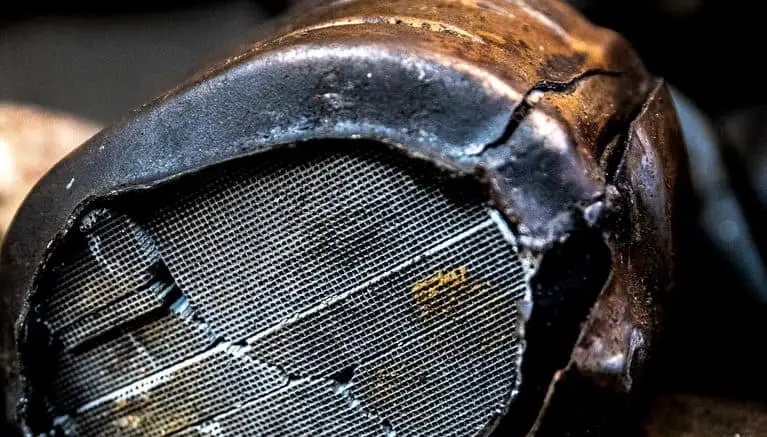

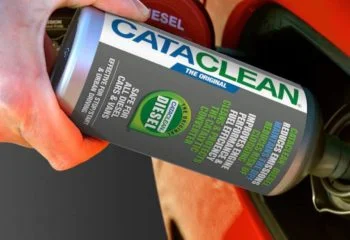

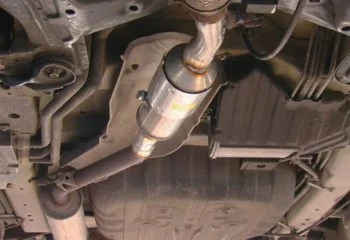
Very good blog post. I certainly appreciate this website. Keep it up!
Mine was stolen last week, I don’t know it has that much value
Hey Monlley, sorry to hear that. It’s always a pleasure to know that my content is helping readers learn something new.